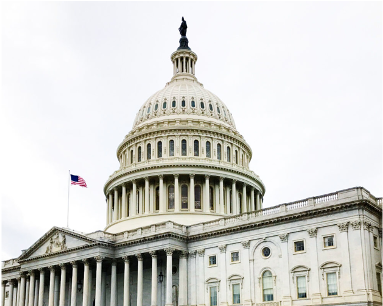The American Rescue Plan Act of 2021 is a response to the COVID-19 pandemic that is designed to provide economic relief directly to Americans. Despite being a response to the pandemic, the structure of the funding itself aligns more closely to the American Recovery and Reinvestment Act of 2009 (ARRA) than to Coronavirus Aid, Relief, and Economic Security Act (CARES) funding.
Created in response to the Great Recession of 2008, ARRA is an example of one of the most significant and successful distributions of capital by the Federal government. President Biden, then the Vice President of the Obama administration, was instrumental in driving the strategy around the Recovery, Accountability, and Transparency Board (RATB). The RATB was created with two key objectives in mind:
- To ensure that no fraud, waste, or abuse occurred during the distribution of over $750 billion in grant funds.
- To track the progress and outcomes of the funds, especially about job creation.
These objectives were accomplished by tracking outcomes through centralized reporting structures. The central reporting through fedreporting.gov that was created to comply with ARRA still stands as an industry benchmark. AmpliFund participated with the RATB on the pilot project to standardize grant reporting across Federal agencies for the Grant Reporting Information Project (GRIP). The GRIP pilot used ARRA funds as a model to see if centralized reporting practices could be implemented with all Federal funds– not just ARRA funds. The pilot ultimately paved the way for grants legislation that has become so familiar to us now, like the DATA Act, the GREAT Act, and later policy refinements like the UGG.
Today, President Biden’s involvement in ARRA is evident when you examine the funding and reporting structure of the Rescue Plan. By examining the structural similarities in the funding distribution process and reporting requirements, grants professionals can use lessons from the past to help their organizations quickly and effectively distribute funding in the present.
Some notable examples of the way that the Rescue Plan funds align with the structure of ARRA funding are:
More funds are allocated to States
Like ARRA funding, the Rescue Plan recognizes that state and local governments are a priority when it comes to job creation. The Rescue Plan makes significant direct investment in these government entities to drive local economies, health, and education.
The amount allocated to states equals approximately 20% of 2019 Tax Revenue. $195 billion is allocated to states, which is a minimum of $500 million for each. Likewise, $130 billion is allocated to local governments. Additionally, $20 billion is allocated to tribal governments, and $4.5 billion for territories.
A less prescriptive approach to spending
Much like ARRA funds, Rescue Plan funds allocated to states, local governments, tribes, and territories are also not extremely prescriptive. For example, these funds can be used to provide aid to households, businesses and other industries impacted by COVID-19, to supplement pay for essential workers, unemployment, and even infrastructure.
This funding approach allows local governments to drive recovery from their unique position to respond quickly to their known challenges and needs; however, tracking outcomes becomes more challenging for grant professionals without taking steps to standardize your reporting practices and processes.
Centralized reporting
Like ARRA funds, Rescue Plan funds are more varied and diverse in how and where they can be used. As a result, centralized reporting structures are essential so you can foster cross-functional communication and stay compliant. To increase the speed of fund distribution you will need a detailed plan in place to accurately track outcomes. Many states created Central Grant Offices (CGO) that still exist today in response to ARRA reporting requirements, and these will be extremely helpful for Rescue Plan funds as well. If you are interested in learning more about how you can create a Central Grants Office for your organization, read more here.
As we wait to see what the final guidance will be around these funds, we can use history as a preliminary map to help us anticipate what may be down the road. In the case of Rescue Plan funding, we should plan on seeing flexibility in fund usage, a focus on tracking recovery metrics, and an adherence to centralized reporting.
For more information on how to create a detailed plan to keep your team on track when managing Rescue Act funds, check out our Grant Guidelines Checklist here.

